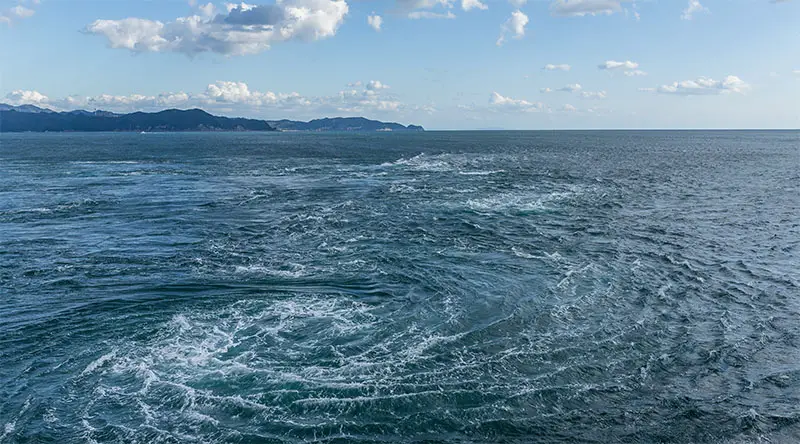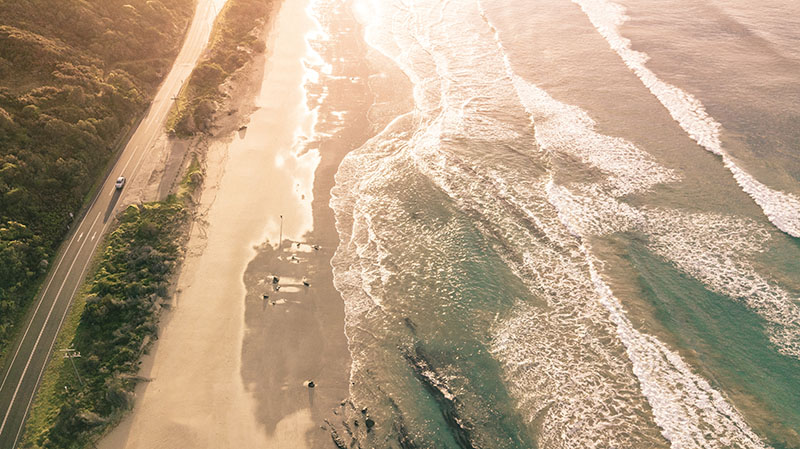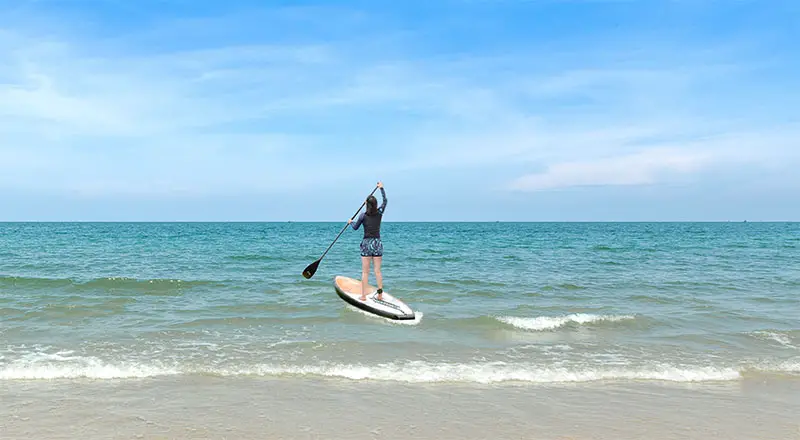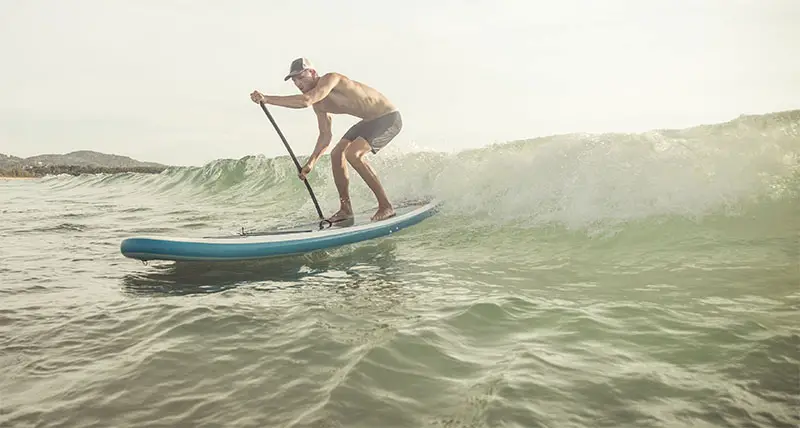How To Paddleboard In The Ocean
In recent years, paddle boarding has exploded in popularity. There are many speculations about why. Maybe it’s because it’s because of its family-friendly nature? Or maybe it’s because of its relative affordability for a water sport? Or maybe it’s becoming so popular for allowing people to be active in a new and fun way? No matter the reason, more and more people are looking into paddle boarding as a new activity!
Contents
If you’re heading to the beach soon, and you’re looking for a fun way to adventure, paddle boarding just might do the trick! It’s relaxing and allows you to explore like kayaking, but also gives you more of an interactive workout!
In this article, we’re going to explore the 6 best tips for how to paddleboard in the ocean, which is a little different from boarding in calmer waters like a lake.
Know Your Paddle Board
Paddle boarding in the ocean may require a little more skill than doing so in calmer waters. So, before diving in, definitely be familiar with the basics. Know how to get on and off your board in the water, how to ride a bigger wave coming in, and how your specific SUP (stand up paddle board) works.
If you’re a beginner, you may even want to take a class. SUP is so popular these days that you can easily find a class offered to show you the ropes and get you ready for paddle boarding in the ocean!
Check The Current & Tides

Before jumping on your board and paddling through the ocean, there are two things that could affect the quality of your experience: the current and the tides. In other words, the way the water goes up and down (tide) and moves left to right (current) can affect your experience.
In the importance of currents and your paddle board experience, the less current the better. Especially if you are a beginner and you’re wanting to know how to paddleboard in the ocean, you’ve got to start small and try it out when the currents aren’t too strong. To know what you’re getting into, there are plenty of apps that provide you with information, but you can also check your surroundings. You may notice warning flags on days where the current is stronger.
Most people are familiar with high tide and low tides, but have very limited knowledge about anything else related to the ocean’s tides. In order to have an optimal SUP experience, you do NOT have to be an expert in understanding the tides, but it would be helpful to know the ideal conditions to go out in.
While there are lots of different opinions and it depends on the type of excursion you’ll be going on, most would agree that paddle boarding during slack tides are the best for beginners. These tides are present within two hours after both high and low tides where the water is a lot more calm and consistent. There are all kinds of tide checker apps that will keep you informed and help you find when slack tides will be!
Find a Good Entry Point

Once you’re aware of your board and the conditions are good, another step in knowing how to paddleboard in the ocean is to find the ideal spot to get in the water and get on your board. With this, there are two fundamental things you should consider…
Away from Hazards
A good entry point is clear of any potential hazards. Whether it’s rocks and debris or piers and other boards, you’ve got to look around your surroundings and make sure that there is nothing hazardous around. The last thing you want is to fall off, land on, or be in the way of something that could hurt you and others who are paddle boarding!
Away from People
You may go paddle boarding with a group, but a truly optimal entry point is one that is away enough from others that you can safely fall without landing on someone or their board.
Attach Your Leash
This may seem like a given in how to paddleboard in the ocean, but it’s too important not to mention. Unless you want to see your SUP slowly drifting away with each wave as your wading in the ocean, you’ve got to attach your leash. It may not be the most comfortable, but it’s there for a reason.
You’re bound to fall off your paddle board at one point or another if you’re going on a longer excursion in the ocean, and you’ll be so thankful you attached your leash.
Get Through The Surf

Now that you’ve found your perfect entry point that is out of the way from anything potentially dangerous, you’re ready to get on your stand up paddle board!
There are some varying opinions, but the consensus is that you should stay on your hands and knees to get through the surf before standing up. It’s going to be really hard to balance with waves breaking at every turn, so just buckle down, get through it, and then you’ll be in the clear! Waves will still come and go, but it will be better past the surf!
Paddle Board Safety
Hopefully, if you’ve taken a beginner class to learn how to paddleboard in the ocean, they will have gone over all the safety rules and precautions. But, just in case, let’s cover the main safety precautions here! Anytime you are doing something in open water, you’ve got to make sure you are doing everything you can to be safe!
Check Conditions
Like I mentioned in tip 2, you’ve got to be aware of the water conditions before you get on your board! Ocean waters have a mind of its own, and being out in conditions that aren’t ideal could be incredibly dangerous. So, make sure the conditions are good before getting out there!
Leash
This was tip number 4! Safety means using your leash and staying connected with your board!
Life Jacket
Anytime you are doing an activity in the water, you’ve got to make sure that you have a life jacket! Even if you are the best swimmer in the world, it’s still not considered safe to paddle board without some form of floatation device!
Skin Protection
Don’t forget to practice skin safety as well by lathering on the sunscreen! If you’re in the sun, you’re at risk of sunburn. Be sure to put on an ample amount of sunscreen before you head out!
Buddy System
Ideally, it’s always safest to do an activity like stand up paddle boarding with a friend. You just never know what may happen, and it’s better to have someone to help you and support you if anything happens!
SUP Surfing

Did you know some people use stand up paddle boards to surf? While this article focused on stand up paddle boarding in the traditional sense, it’s also important to note that some people may be interested in giving this a try.
Obviously, surfing will require more expertise, so you’ve got to be pretty proficient in flat water SUP beforehand. But, for tips on SUP surfing, a lot of the tips are very similar… You’ve got to find the right gear, wear your leash and safety gear, and paddle past the surf. Where it gets interesting is when the waves come and how you approach them!
You will want to change your stance when SUP surfing. Instead of standing with your feet next to each other, have one foot in front of the other. Also, both feet should point to one side of the board instead of straightforward. In addition, your feet should be a little wider than shoulder width apart.
Here’s another important tip. When you are just starting out, stay away from other people. You don’t want your board hitting swimmers or others in the water. Make sure there is a clear pathway from you all the way to the beach. Have fun SUP surfing!
Wrap-Up
As we mentioned above, paddle boarding has been exploding in popularity the past few years. It is a great way to get activity while also having fun!
But, knowing the ins and outs of how to paddleboard in the ocean is critical if you plan to hit the salt water. Here are our 6 best tips for SUP in the salt water.
First, you must know and be familiar with your paddleboard. Second, you must check the currents and tides before jumping into the surf. Next, find a good entry point for your board that is away from rocks and people. Fourth, always be sure to attach your SUP leash to you. Next, you need to get through the surf, which might take some practice. Sixth, always always practice paddleboard safety. If you follow these six steps on how to paddleboard in the ocean, you should have a great time while also getting some awesome exercise!

